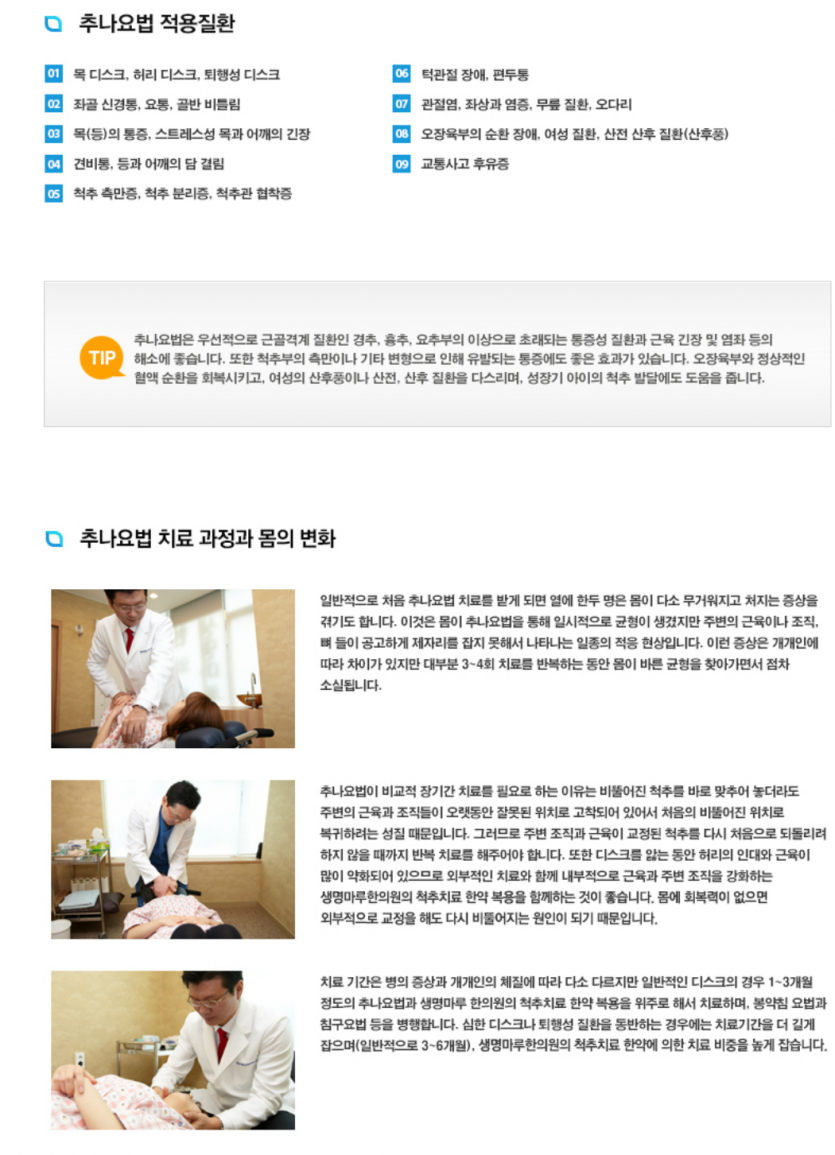Re: Re: Re: 정리
작성자 정보
- 삼둡 작성
- 작성일
컨텐츠 정보
- 571 조회
- 목록
본문

Chuna Therapy – Indications & Treatment Process (환자 친화형 영어 안내문)
Conditions that Respond Well to Chuna Therapy
Herniated or degenerative discs in the neck or lower back
Sciatica, lumbago, or pelvic imbalance
Stiff neck and shoulder tension related to stress
Frozen shoulder and shoulder pain due to misalignment
Thoracic spine problems such as vertebral fixation or thoracic outlet syndrome
Temporomandibular joint (TMJ) dysfunction and facial pain
Hip, knee, or ankle joint pain caused by imbalance or injury
Women’s health issues such as pregnancy- or postpartum-related pelvic and spinal pain
Whiplash injuries and musculoskeletal pain following traffic accidents
◻ Note:
Chuna therapy is a form of Korean manual medicine (similar to chiropractic adjustment) that helps correct spinal and joint misalignment.
By improving posture and restoring normal balance of the spine and pelvis, it helps reduce pain, muscle tightness, and nerve irritation.
It also supports better blood circulation, promotes recovery after childbirth, and can even be beneficial in women’s gynecological or pelvic health problems.
How the Body Responds to Chuna Therapy
First few sessions:
It’s normal to feel temporary heaviness, soreness, or stiffness after your first treatment. This happens as your muscles and joints begin to adjust to a healthier alignment. Most patients feel noticeable relief and stability after 2–4 sessions.
Why repeated treatment is important:
Even when the spine or joints are adjusted into the correct position, surrounding muscles and ligaments may try to “pull them back” due to old patterns of tension.
For this reason, repeated sessions are needed until the body’s soft tissues adapt and stabilize.
Typical treatment duration:
Acute conditions (like a sudden lumbar sprain or recent disc problem): often improve within 1–3 months.
Chronic or degenerative conditions: may require 3–6 months of steady treatment for lasting recovery.
To achieve the best results, Chuna therapy is often combined with acupuncture, herbal medicine, and other traditional Korean therapies, which together not only relieve pain but also prevent recurrence.
관련자료
-
이전
-
다음



